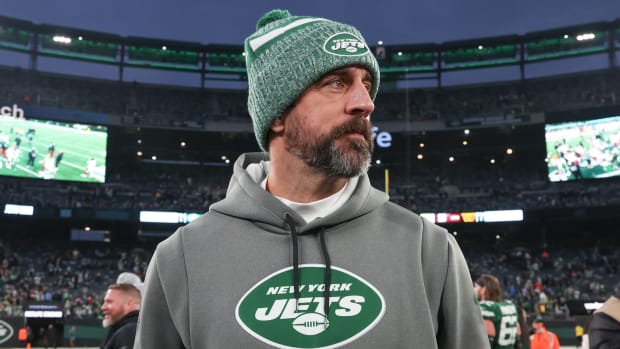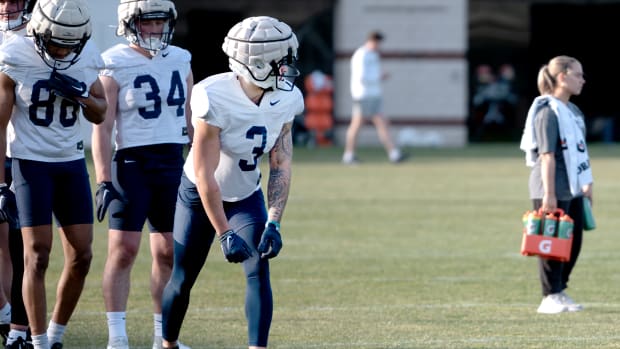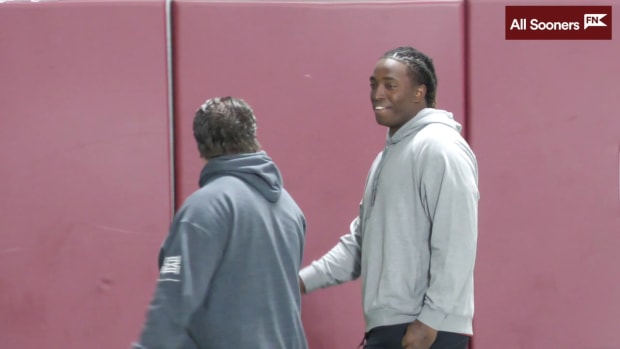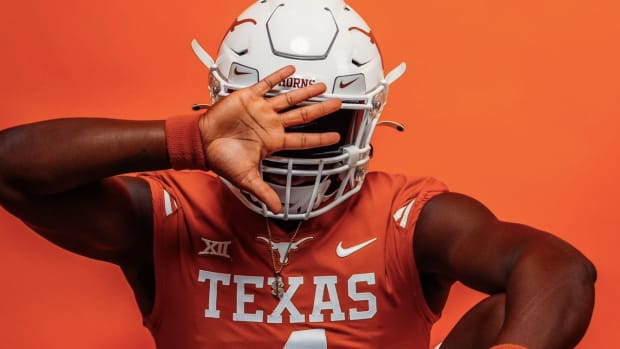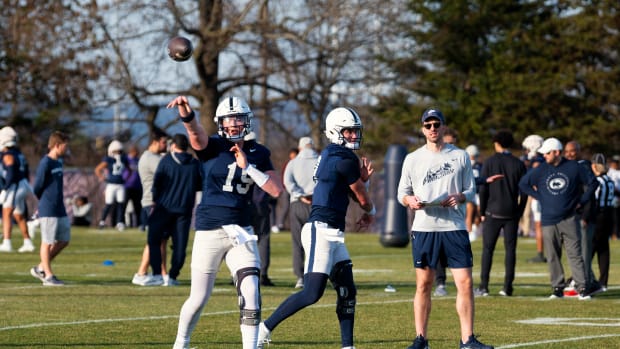Some Schools Might Not Play This College Football Season, Emmert Tells Congressional Leaders
College officials believe a possibility still exists that some schools will not play a football season this fall, NCAA president Mark Emmert told Congressional leaders this week, creating scheduling challenges that officials are currently examining.
On a conference call Wednesday with House Republicans, Emmert and several professional sports executives updated lawmakers on each of their restarting plans in an “encouraging” call, says Rep. Steve Scalise (R-La.), the Minority Whip. Scalise, who’s taken on the role of sports within the White House’s task force to reopen the economy, spoke to Sports Illustrated on Thursday about the call, which included Emmert, NFL Commissioner Roger Goodell, NHL Commissioner Gary Bettman, PGA Commissioner Jay Monahan and NASCAR President Steve Phelps.
Scalise emerged from the call with confidence that the NFL and college football will play this fall with fans in the stands, though they may be wearing masks and receiving temperature checks while entering stadiums. College football, meanwhile, could be missing some of the 130 teams that make up the Football Bowl Subdivision, Emmert told leaders.
“There are some schools that might not play football next season and that’s their choice,” Scalise says. “They’ll then have to modify the schedule to work around that. They’re working through that right now, but most want to start back again and most schools are working towards bringing students back in the fall, and that’s a big driver too. You want to work with the schools so sports aren’t ahead of academics so you can do both at the same time.”
In a story in SI last month, conference commissioners expressed doubt that all 130 FBS programs would start the season on time. But since then, mostly positive news has followed. Slow-opening West Coast states, namely California, were thought at one point to be in jeopardy of playing a season, but that's since changed. Meanwhile, dozens of schools have already started welcoming athletes to campus for voluntary workouts, and NCAA leaders have even agreed on a plan for an on-time kickoff on Labor Day weekend.
Optimally, a football team should hold six weeks of training before kicking off, and at minimum, a team needs four weeks, says Shane Lyons, the West Virginia AD and chair of the DI Football Oversight Committee, a powerful rule-making body. June workouts are the first in what officials are considering a four-step process to starting the season: 1) voluntary workouts in June; 2) workouts in early-to-mid July with coaching interaction; 3) two weeks of NFL-style OTAs in late July; 4) and a mandatory four-week camp in August.
Under the plan, if a team does not complete four weeks of practice, they cannot start the season. Because states are in various reopening stages, some schools could be behind others. For instance, teams are beginning voluntary workouts at different times, some starting as early as this past Monday and others not beginning until July. Conceivably, virus outbreaks on a team could interrupt training and potentially delay it from starting a season on time. Already, several schools have announced that athletes and staff members have tested positive for the coronavirus upon arriving on campus. Almost all of them were asymptomatic, which doctors say is the virus' deadliest threat—an invisible opponent. “If somebody is not allowed to practice until Aug. 15 and their first game is Sept. 5, they might miss the first two weeks because their state might not allow them to return in time,” Lyons told SI last month. “There is a feeling that we can’t wait for everybody.”
That could create logistical scheduling nightmares, possibilities that NCAA leaders are examining, Emmert told lawmakers.
“They’re definitely looking at the challenges that would be posed if some schools won’t play or participate. They’re aware that’s going to be the case with a few schools,” Scalise says. “Hopefully it’s limited. Each school makes their own decision and then the NCAA is going to work within that to put together a season that works for the safety of the players and schools and hopefully as well with fans.”
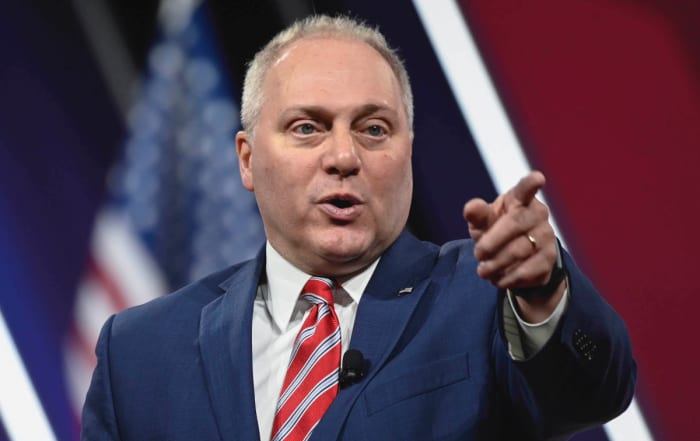
Rep. Steve Scalise (R-La.), the House Minority Whip, has taken on the role of sports within the White House’s task force to reopen the economy.
Jack Gruber-USA TODAY
Stadiums might not necessarily be full this fall, but Scalise expects some amount of fans. That includes Scalise himself, an avid fan of the New Orleans Saints and LSU Tigers.
“I want to be there in the (Super)Dome when Drew Brees beats Tom Brady in September, and I want to be in Tiger Stadium when Coach O brings the team back out to defend our national title,” Scalise says. “I’m sure there will be people wearing masks. Maybe not all people will want to come back but people I talk to want to be in the stadium. They’ll be careful. If you see somebody coughing, they’re going to probably go the other way. And they’ll probably have temperature checks. I think that’s going to be something part of a testing protocol for a lot of sports leagues.”
Like many sports aficionados, Scalise is tired of watching what he called “25-year-old games.” He believes sports will help “restore our mental health.” He compares the post-coronavirus restarting of sports to the aftermath of Hurricane Katrina, which rocked his native land. A year after the hurricane decimated much of the south Louisiana and Mississippi coasts, the Saints reopened the Superdome, which just months earlier was used as a giant triage facility, with a game against the Atlanta Falcons that produced one of the most electric environments for a sporting event in Louisiana history.
“Sports really are the most unifying parts of our society,” Scalise says. “They bring people together. If you can bring big sporting events back, it shows others that they can come back.
“This worked for us in New Orleans after Hurricane Katrina. The Saints became a rallying point. The Dome was a symbol of the worst elements of Katrina and then it became one of the most unifying symbols when the game against the Falcons happened,” he says. “It showed the city came back and brought people together. People want to see their teams again, want to have things to rally around. We can’t be afraid of this disease. We’re Americans. We don’t cower from challenges. We face them head on. We’re smart and we’ll learn how to safely get back.”
